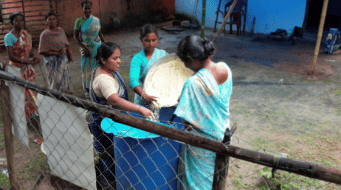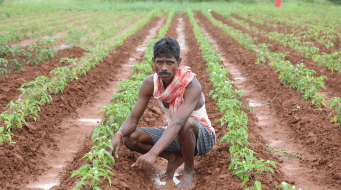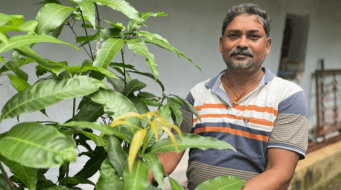By Vikas Prakash Joshi
The small boy took out a book from the library shelf, on Friday morning (Library Day in his school), and looked at it curiously. It was his habit to look at the books around him, and soak in the atmosphere of the library. One day, he felt, he dreamed he would write a book and share it with people. Fast forward many years later, to the year 2017 and the boy—who was me—decided he wanted to make this goal come true. And he is going to (more good news on that front later). But for now, it is enough to say that it was a dream come true when Watershed Organisation Trust wanted to bring out a book of its own, and I was involved in it.
It all started in early 2018 or 2017-end, when WOTR decided to bring out something meaningful to mark its 25th anniversary. Various options were considered and finally we settled on a coffee table book. It was decided that, appropriately, 25 stories would be taken. These stories were mainly from Maharashtra, and a few from other states too and these would then be compiled in the form of a book. There would be plenty of photos and attractive design and layout. A writer was commissioned to do the stories in Maharashtra while WOTR Communications Team would do the other 4 stories: From Jharkhand, Telangana, Rajasthan and MP. The team of Kishore Telang, Sandeep Jadhav, Nilima Jorwar, Pragati Khabiya, Harshal Khade, me and Isha Fuletra, were involved in this. I express my deepest gratitude to Nilima Jorwar for personally visiting not just these 21 villages, but many others as well.
A matter of great satisfaction
It was a matter of great satisfaction that I could play a role in the book ‘Gavkari Ekatra Samruddhi Sarvatra’ (When villagers unite, everyone benefits) a Marathi coffee table book brought out by WOTR on its 25th anniversary. In this blog, I will be not just sharing our experiences but also some lessons which will be helpful for those who wish to bring out books of their own.
We were all excited at the prospect of working on ‘our book’, but we realised that this was much harder than we thought. First, the stories had to be translated into Marathi in some cases and the stories already in Marathi had to be edited and proof-read thoroughly. Photos had to be selected for each story; finding agreement on which photo to take and to drop was difficult. The order of the stories had to be determined, whether to give profiles to every author, which photo would come on every page, whether the page numbers would be in Marathi or English, what format the book was to be in, which cover photo to use, which back cover photo and countless minor decisions. A book has many moving parts and it is very confusing to keep track of so many things. (Pro tip: Keep a book publication checklist!)
They say ‘it takes a village’ for anything meaningful to happen and this book was no exception. I want to appreciate all those who made it possible, including my colleagues at WOTR, Dilip Lathi, Managing Director of publication house Vasudha Research and Publications Pvt. Ltd, and Graphic Designer Raja Badsal for their patience, to name just a few. From the title to the book cover photo and back cover, even the dedication page, to the table of contents, to the position of page numbers, there was much discussion and debate but in the end, we came out with a book that we are all very proud of.
Changes in people’s live

I wrote the stories that are from Jharkhand and Telangana, focusing on the changes our work had done in lives of people there. Travelling for the stories was also a memorable, enriching experience. Besides these two stories, I also assisted my colleagues with the book layout, cover photograph, back cover copy, translation of the foreword, editing and proofreading the stories, writing the back cover copy, writing the dedication and getting it translated into Marathi
What are the learnings from this book? I would like to pass them on to you. First, proof-read the book as many times as possible, before and even after it’s designed (In fact there is lot of proof-reading at every stage). Second, there is a lot of back-and-forth as there are many moving parts in a bookThe content keeps changing till the last minute, so even the Table of Contents (TOC) and page numbers too have to change. Be aware of that and always keep the latest file version handy as there can be so many versions of the same file, it gets confusing. Don’t be in a hurry to freeze the designed version till you are sure the text is really finally ‘FINAL’. Third, the whole process of bringing a book to life is challenging, so it won’t seem that ‘magical’ when you are actually involved in it. It can even be exhausting. Fourth, please buy the book!
The book will be useful to NGOs, students, practitioners, development consultants, academia, libraries, politicians, journalists and bureaucrats—to name a few.
If you are interested in a copy, please contact communications@wotr.org.
Happy Reading!





